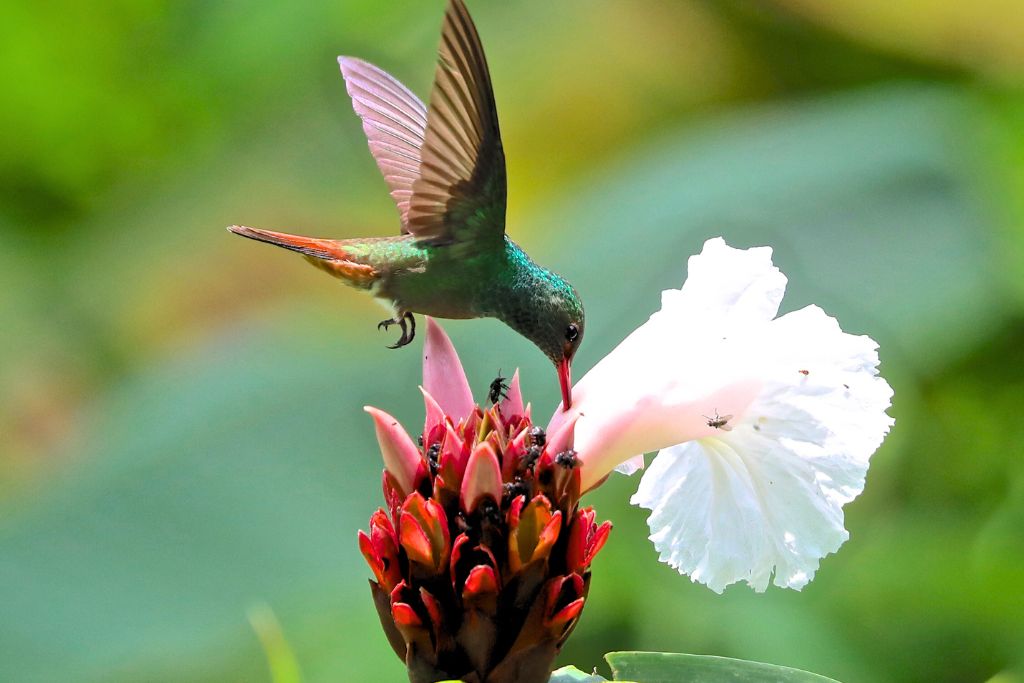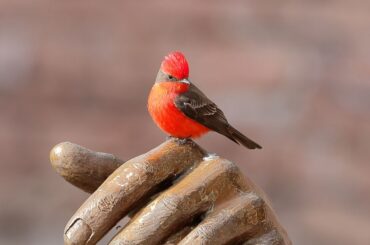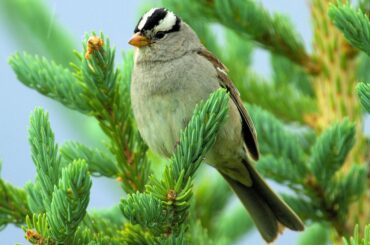Have you ever wondered about the mesmerizing hummingbirds that grace the skies of Michigan? Michigan is home to various hummingbird species, each with enchanting characteristics.
Did you know these remarkable birds embark on a daring migratory journey spanning thousands of miles? But that’s not all! With our Michigan hummingbird map, you’ll get a visual guide to their preferred habitats across the state, making it easier to spot these delightful creatures in your backyard.
Join us as we explore Michigan’s hummingbirds, whether you’re a birdwatcher, environment lover, or curious about these amazing creatures. Discover their fascinating world and unusual behaviors.
What do Hummingbirds look like in Michigan?
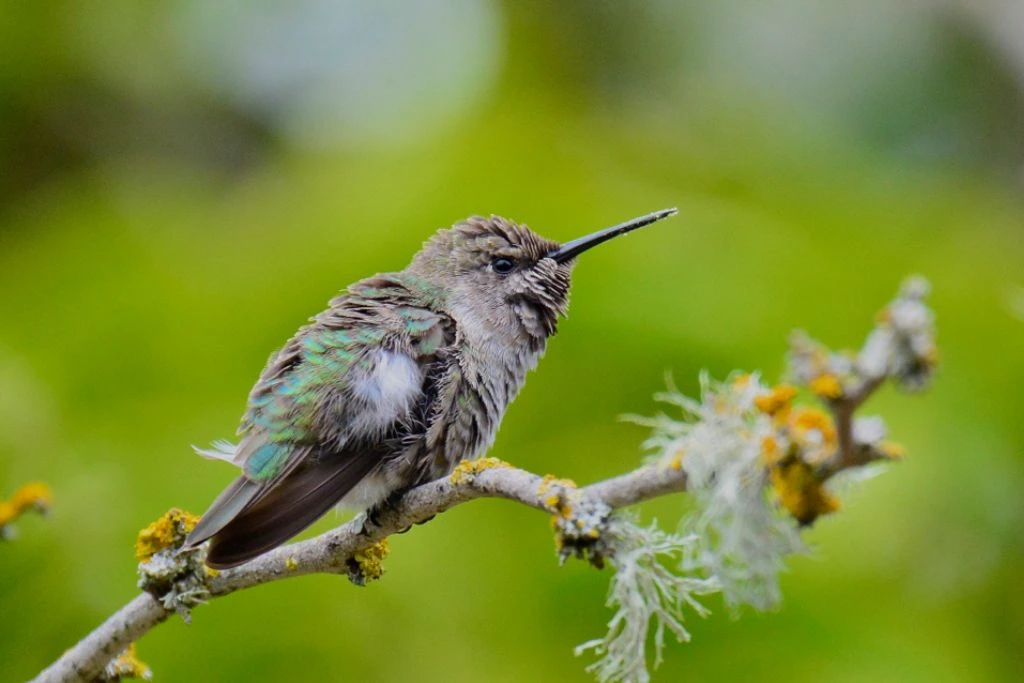
The hummingbirds native to Michigan have several unique characteristics in common, which elevate them to the status of genuinely remarkable creatures.
The length of these teeny-tiny avian marvels ranges between 3 and 4 inches, placing them among the tiniest species of birds native to North America.
In terms of color, Michigan’s hummingbirds display an array of vibrant shades. The most common species, the ruby-throated hummingbird, boasts a brilliant emerald green body with a distinctive iridescent red throat patch in males.
Females have a slightly more subdued coloration with a white belly and green back. Other species, like the Rufous hummingbird, exhibit stunning reddish-brown feathers that shimmer in the sunlight.
You can admire these remarkable birds’ stunning colors and intricate details with our Michigan hummingbird pictures.
Location-wise, hummingbirds can be found throughout Michigan, especially during the spring and summer. They prefer habitats such as woodlands, gardens, and areas near nectar-rich flowers.
Ruby-Throated Hummingbird
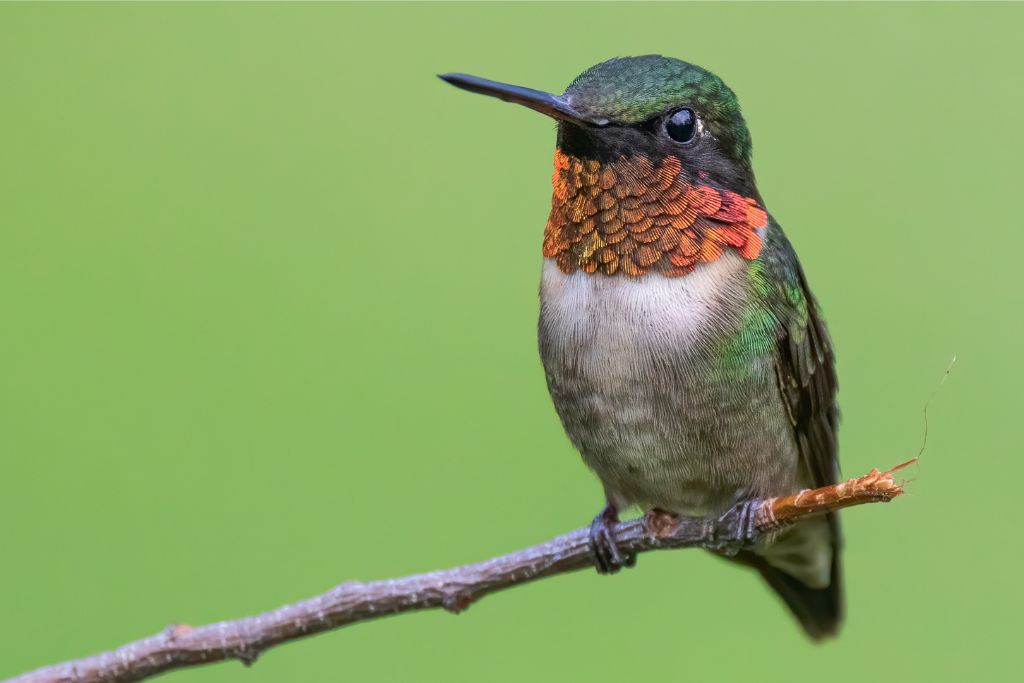
- Kingdom: Animalia
- Phylum: Chordata
- Class: Aves
- Order: Apodiformes
- Genus: Archilochus
- Species: A. colubris
The Ruby-Throated Hummingbird (Archilochus colubris) is 3 to 3.5 inches long. Females have duller green back and wing feathers than males. Males are named for their ruby-red neck patch. These agile birds have long, narrow beaks ideal for sucking nectar from flowers.
This species can hover in midair and even fly in the opposite direction since their wings can beat up to 80 times per second. They see clearly and can differentiate between many different shades of color.
These types of hummingbirds in Michigan tend to flourish in various environments, such as gardens, woodlands, and meadows. People have reported seeing them foraging for nectar at bird feeders and flowering plants.
They have great vision and can differentiate between a wide variety of hues. Gardens, forests, and open meadows are some of the types of environments that these hummingbirds find to be the most favorable.
Female species build a little cup-shaped nest of plant fibers, moss, and spider silk and cover it with lichens. For two weeks, she incubates two pea-sized eggs. After hatching, the female feeds the young regurgitated nectar and tiny insects. Three weeks after hatching, hummingbirds become autonomous.
Ruby-throated hummingbirds live 3 to 5 years. They migrate thousands of miles between North America, Central America, or Mexico to reproduce and in the winter. These small birds eat half their weight in nectar and insects daily. They can fly 30 mph and perform amazing aerial acrobatics.
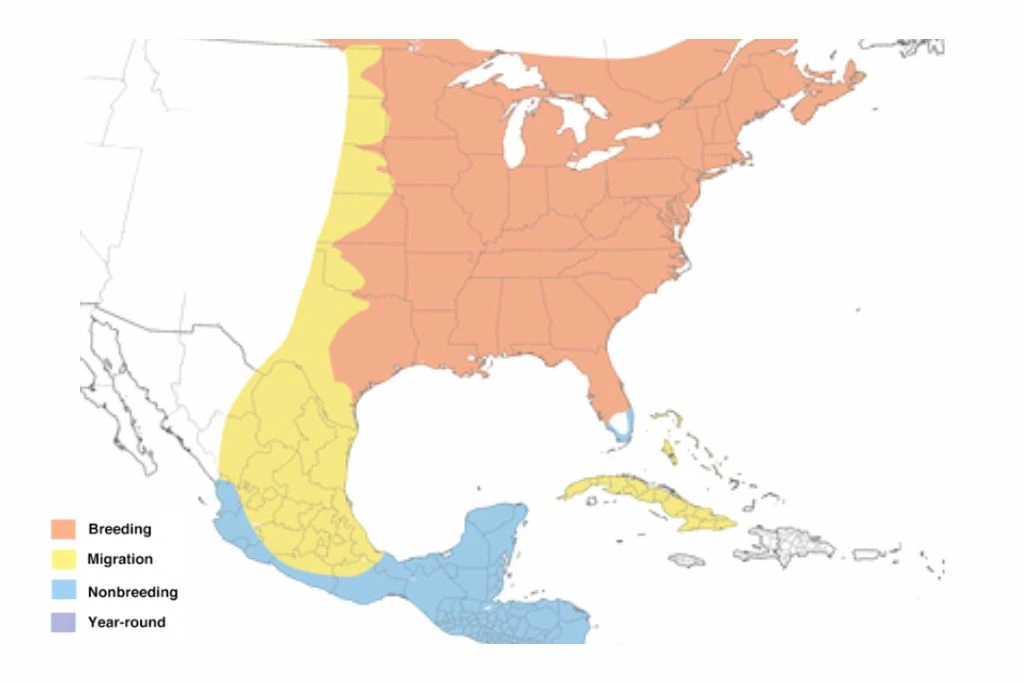
Spring and summer in Michigan bring ruby-throated hummingbirds. Keeping an eye out for blooming gardens, meadows, and woods is a fantastic way to spot these delightful creatures. You may also attract hummingbirds with sugar water feeders.
Rufous Hummingbird
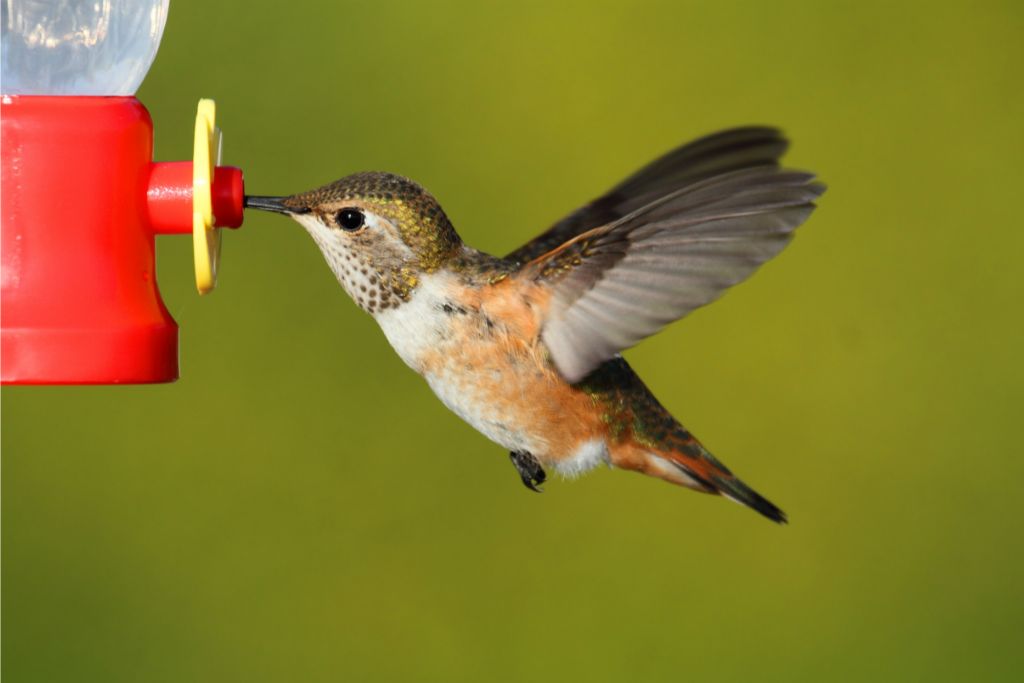
- Kingdom: Animalia
- Phylum: Chordata
- Class: Aves
- Order: Apodiformes
- Genus: Selasphorus
- Species: S. rufus
A typical Rufous hummingbird (Selasphorus rufus) is only 3.5 to 4 inches long. The feathers of both sexes are a ruddy brown color, but the males’ backs and flanks are a striking coppery orange. Their long, thin beak is designed specifically for sucking honey. The hummingbirds’ tiny wingspan allows them to maneuver quickly and deftly through the air.
During hummingbirds in Michigan migration, they cover a lot of ground. They navigate using the sun and magnetic fields. They live in many different places, such as forests, mountains, gardens, and grassy plains.
The usual lifespan of a Rufous hummingbird is between 3 and 5 years. Some individuals journey up to 4,000 miles from their breeding habitats in Western North America to their wintering grounds in Mexico, making them the hummingbird species with the longest migration on record.
These hummingbirds have a reputation for being extremely aggressive, and they will actively defend their territory, even against birds much larger than themselves.
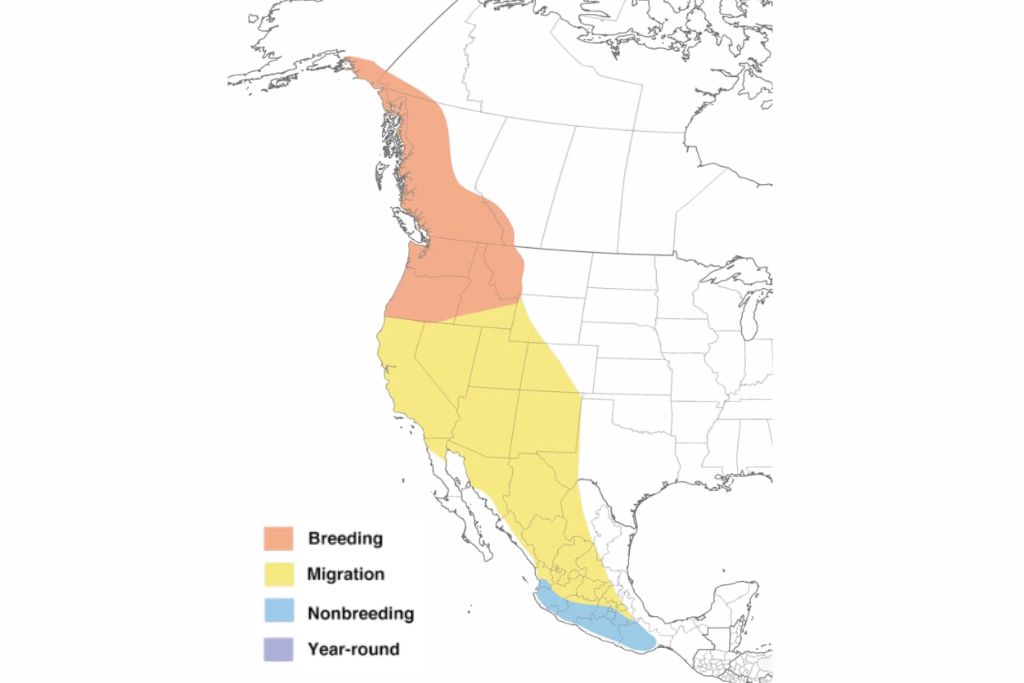
In Michigan, hummingbirds are considered unusual visitors because they usually only pass through the state during migration. The western regions of North America are where you are most likely to come upon them.
Keeping a lookout for Rufous Hummingbirds in Michigan in places with abundant nectar supplies is recommended. These places include gardens with blooms attractive to hummingbirds and hummingbird feeders.
Anna’s Hummingbird
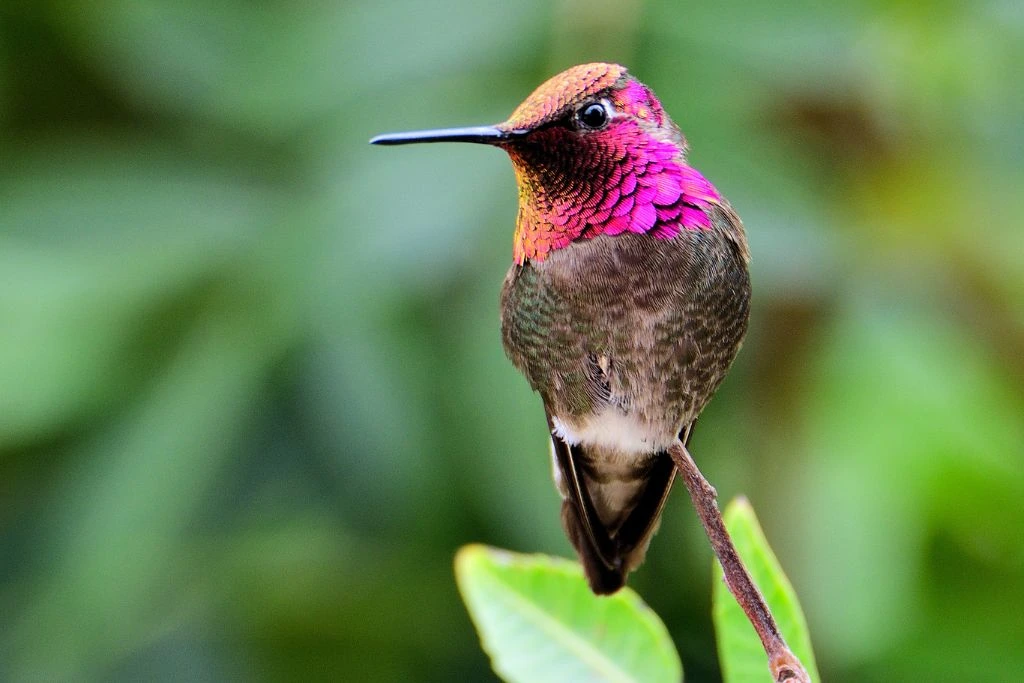
- Kingdom: Animalia
- Phylum: Chordata
- Class: Aves
- Order: Apodiformes
- Genus: Calypte
- Species: C.anna
Calypte anna, also called Anna’s Hummingbird, is a type of hummingbird that is about 4.3 inches long on average. Males have beautiful iridescent green feathers on their backs and heads. Their throats and caps are a bright rose pink.
Females are distinguished by their subdued coloring, which consists of feathers with a gray-green sheen and a white neck. These hummingbirds have long, slender bills adapted for reaching far inside blooms to siphon nectar from them.
They can control their body temperature, which lets them live in a wide range of places. They live in a variety of places, such as woods, gardens, and coastal areas. They are known to be flexible and can even live well in cities if there are enough nectar sources.
Anna’s hummingbirds are known for their year-round breeding behaviors. They do not migrate like some other hummingbird species. The female constructs a small cup-shaped nest using plant fibers, spider silk, and lichens for camouflage.
Both parents take turns feeding the chicks a diet of nectar and small insects. The young hummingbirds fledge in about three weeks and become independent.
The average lifespan of Anna’s hummingbird is between 5 and 9 years. They can fly in any direction, even backward and upside down.
Male species have a special way of courting called a “dive display.” He climbs high then dives steeply, whistling with his tail feathers. They are known for their loud, buzzing calls, which they use to defend their territory and attract mates.
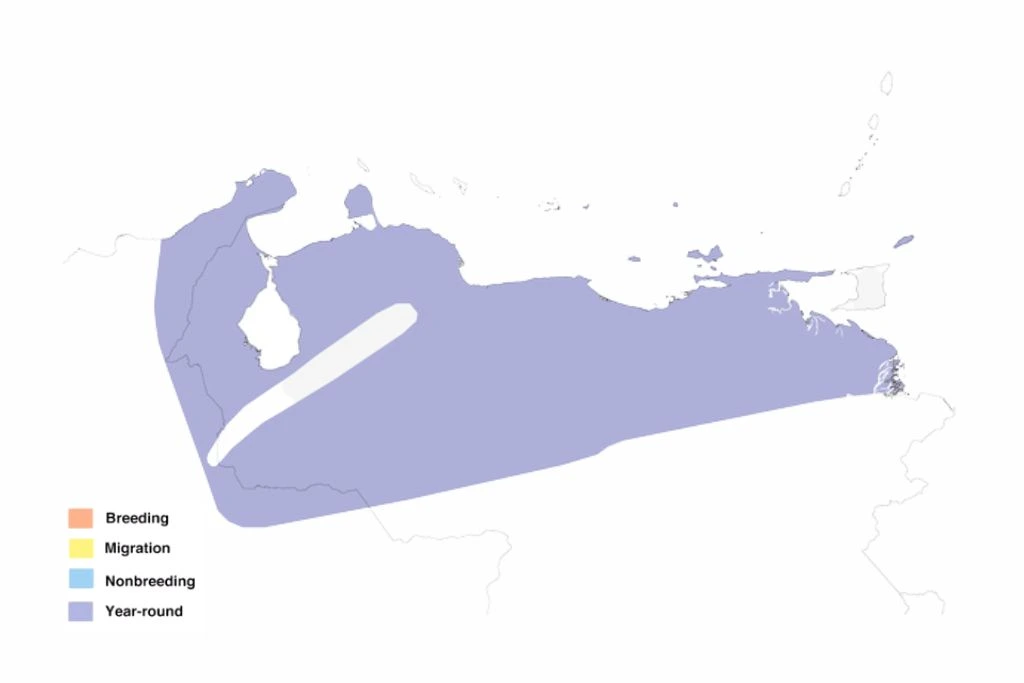
Hummingbirds are not native to Michigan and are primarily found along the western coast of North America, from southern Alaska to northern Baja California. Anna’s hummingbirds are rare visitors to Michigan, and sightings may occur during migration or as vagrants.
To spot Anna’s hummingbird in Michigan, it is recommended to keep an eye on birding reports, local birding groups, and areas with abundant nectar sources, such as gardens or parks with flowering plants.
White-Eared Hummingbird
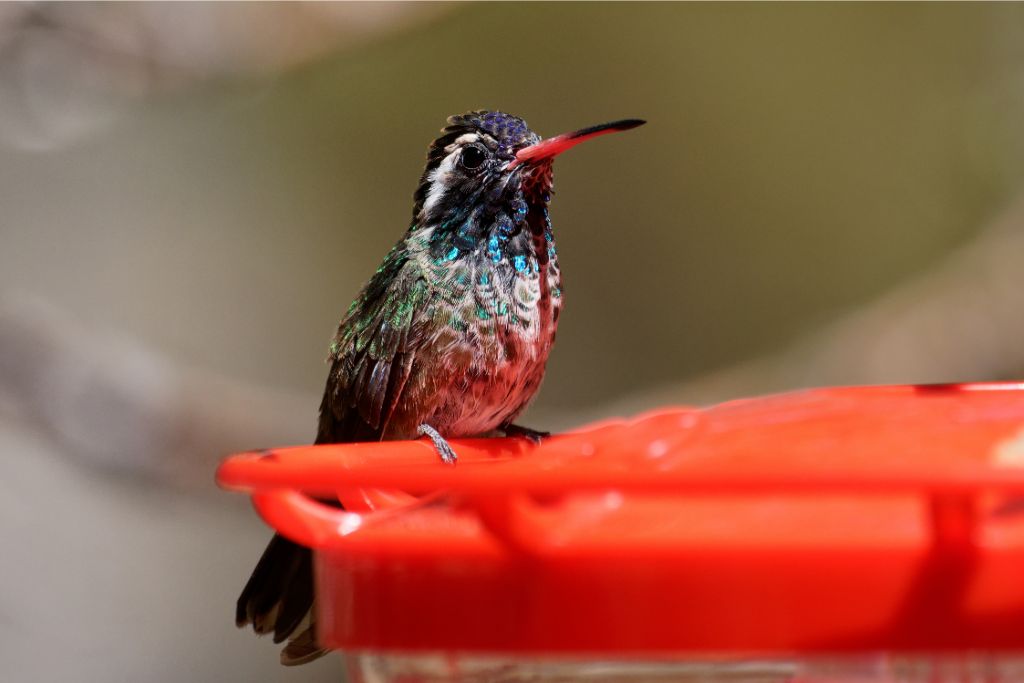
- Kingdom: Animalia
- Phylum: Chordata
- Class: Aves
- Order: Apodiformes
- Genus: Basilinna
- Species: B. leucotis
The White-Eared Hummingbird, also known as Basilinna leucotis, is a relatively little bird, averaging between 3.5 and 4 inches in length. Males have feathers that are a brilliant shade of green all over their backs and wings.
They also have a white eye stripe behind each eye and a noticeable white patch behind each ear, which is where they earn their name. The females are similarly colored, but their backs have no white patches. They have elongated and slender bills, ideally suited for reaching into blooms to extract nectar.
There have been sightings in Michigan of the rare migrating white-eared hummingbird. It is unusual to catch sight of them in Michigan. Birdwatchers who want to observe this hummingbird can subscribe to birding reports, join local birding clubs, and sign up for rare bird alerts.
The white-eared hummingbird has an average lifespan of around 5 to 6 years. They are known for their aggressive nature and will defend their feeding territories vigorously against other hummingbirds and even larger birds.
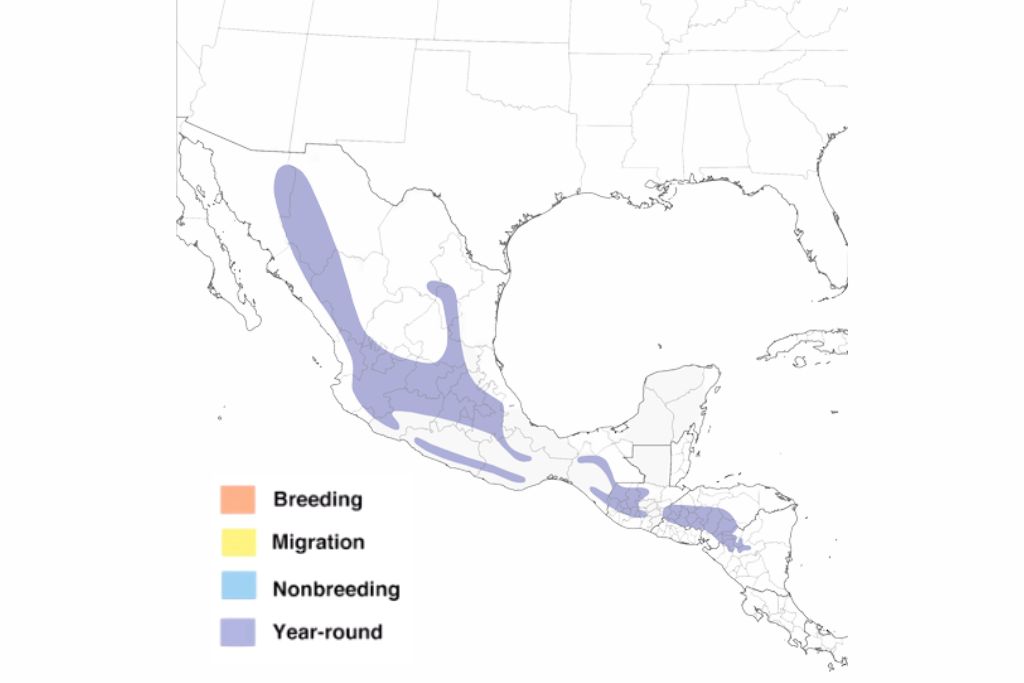
These hummingbirds have rapid metabolisms and hearts that beat 1,260 times per minute. They spread pollen from flower to flower as they search for nectar.
Mexican Violetear
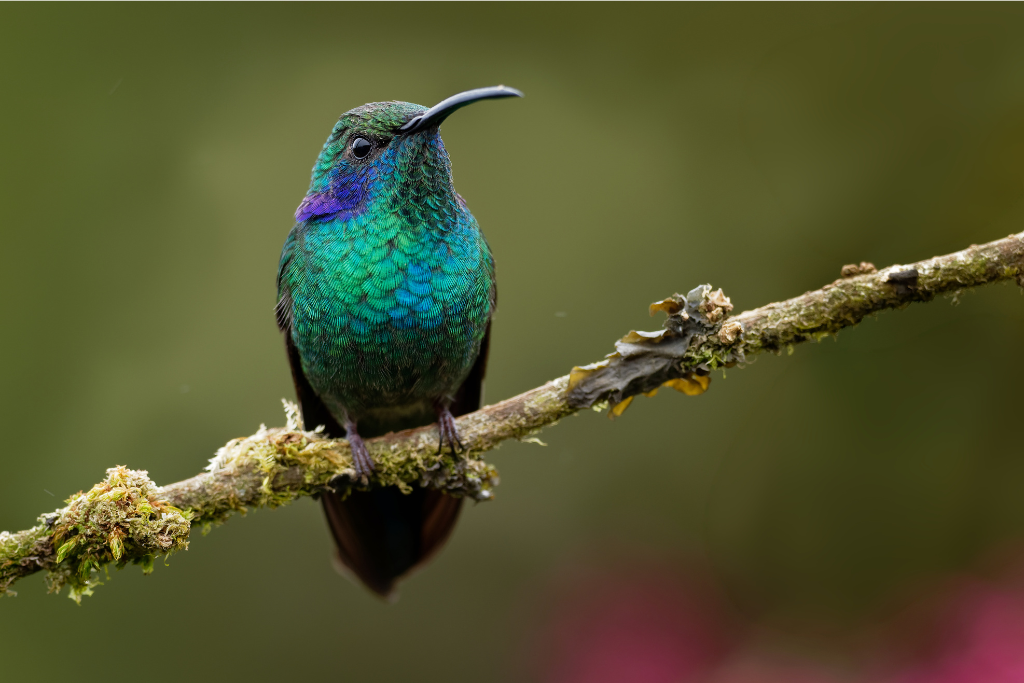
- Kingdom: Animalia
- Phylum: Chordata
- Class: Aves
- Order: Apodiformes
- Genus: Colibri
- Species: C. thalassinus
Mexican Violetears (Colibri thalassinus) are medium-sized hummingbirds. Its name comes from its bright green upperparts and violet-blue throat. They also have grayish-white underparts and long, thin bills for seeking floral nectar. Their specialized tongue enables them to extract nectar from flowers efficiently.
These hummingbirds have excellent flight skills, allowing them to navigate through dense vegetation and feed on the wing.
Mexican Violetears are not native to Michigan, and sightings in the state would be extremely rare. They are primarily found in their natural range of Mexico and Central America.
Female species lay 2 white eggs, which she takes care of for about two weeks. Both parents take turns giving nectar and small insects to the chicks. In about three weeks, the young hummingbirds can fly on their own.
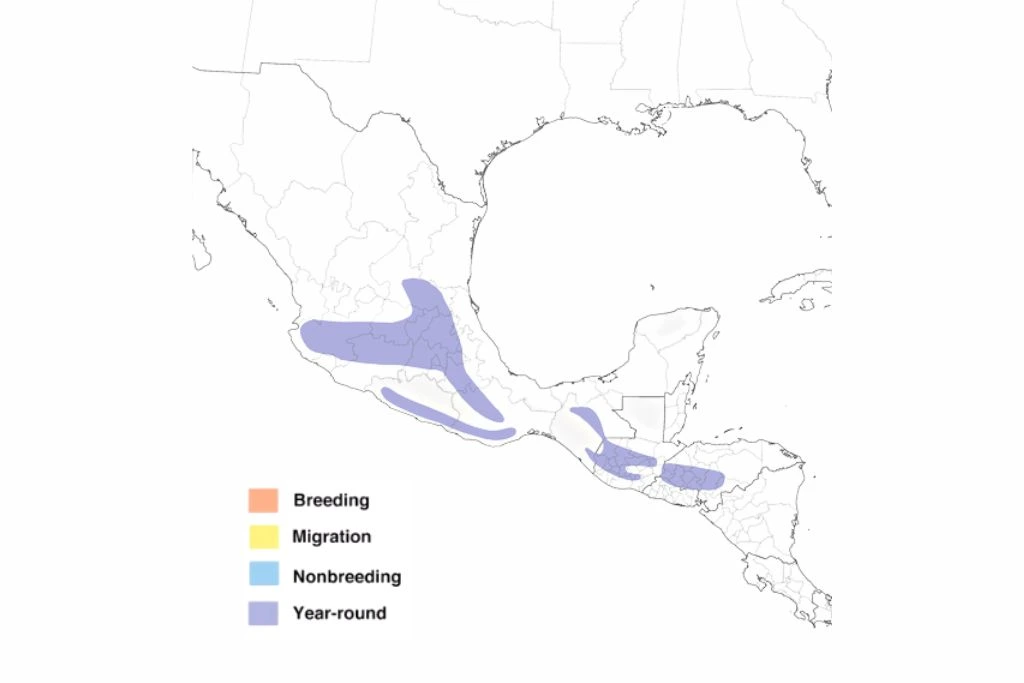
The average lifespan of a Mexican violetear is between 5 and 6 years. They are known for being territorial and will fight hard to keep other animals out of their feeding places. These hummingbirds are drawn to red flowers because they know that red means lots of juice.
FAQs
What is the Season for Hummingbirds in Michigan?
The hummingbird season in Michigan is from late spring to early fall.
Where Do Michigan Hummingbirds Live?
Michigan has many hummingbird habitats. They live in forests where they forage for food. These colorful birds flourish in woodlands with plenty of nectar-producing flowers and trees. Michigan hummingbirds also frequent meadows for nectar and insects.
They can be spotted in gardens, drawn by blooming flowers and hummingbird feeders. These charming critters have also adapted to urban locations, taking advantage of park and residential neighborhood flowers.
How Do You Attract Hummingbirds in Michigan?
To attract hummingbirds in Michigan, plant nectar-rich flowers and offer clean feeders with a sugar water solution.
When Do Hummingbirds Come to Michigan?
Hummingbirds come to Michigan in late April or early May.
When Do Hummingbirds Leave Michigan?
Hummingbirds leave Michigan in late September or early October.

